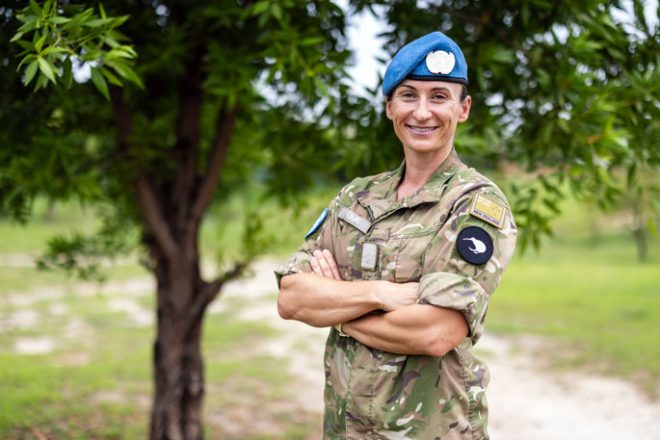Ang Tenyente Colonel Emily Hume at ang kanyang koponan sa South Sudan ay nagsusumikap upang maghanda para sa isang mahalagang paparating na halalan habang sinusubukan din na maiwasan ang isang krisis ng tao sa hilaga ng bansa. Ang South Sudan, isang bansang Aprika, ay nakikitungo sa maraming mga isyu kabilang ang kawalang-tatag sa politika, digmaang sibil, isang krisis ng tao, mga salungatan sa etniko at tribo, at mga problemang pang-ekonomiya.
Ang United Nations Mission sa South Sudan, na siyang pinakamalaking misyon sa pagpapanatili ng kapayapaan sa buong mundo, ay may halos 18,000 tauhan. Si Tenyente Colonel Hume, na mula sa New Zealand, ay ang senior national opisyal sa lupa. Siya ang namamahala sa kapakanan ng koponan ng New Zealand, na nakikipagtulungan sa mga kasosyo sa militar mula sa ibang mga bansa, UN Police, mga sibilyan ng UN, at mga ahensya ng tao. Ang kanilang layunin ay upang subaybayan ang mga kasunduan sa kapayapaan, protektahan ang mga sibilyan, at tulungan na maghati
Ang Tenyente Colonel Hume ay itinatag sa ibang bansa ng tatlong beses, kasama ang mga nakaraang misyon sa Solomon Islands at Lebanon. Ngayon, sa 36 taong gulang, siya ang representante na pinuno na namamahala sa pangmatagalang pagpaplano para sa 14,000 tauhan ng militar ng UN sa South Sudan. Nakikipag-usap din siya sa mga koponan sa South Sudan, ang punong tanggapan ng misyon, at punong tanggapan ng UN sa New York.
Ang isa sa kanyang mga unang gawain sa Timog Sudan ay ang pamunuan ng isang pag-aaral upang makita kung ang misyon ay may sapat na mapagkukunan ng militar upang makumpleto ang mga gawain nito. Ang karanasang ito ay nagbigay sa kanya ng mas malalim na pag-unawa sa mga hamon na kinakaharap ng mga koponan sa lupa, kabilang ang pagharap sa mas mataas na tensyon sa isang bansang may limitadong imprastraktura at walang maagang sistema ng babala
Ang pinaka-mahirap na bahagi ng kanyang pag-aayos ay ang makita ang kahirapan at paghihirap na nakatira ng maraming mga tao sa Timog Sudan. Sinabi niya na humigit-kumulang 8.3 milyon sa 11 milyong katao sa bansa ay umaasa sa tulong ng tao. Lumala ang sitwasyong ito mula nang lumabas ang salungatan sa kalapit na Sudan noong Abril.
Nagsusumikap ang UN upang maiwasan ang isang tao na krisis sa mga lugar malapit sa Sudan, na nakakita ng pagtaas ng mga taong bumalik sa Timog Sudan, mga refugi, at mga taong panloob na pinalawig na tumatakas sa karahasan. Kasabay nito, naghahanda sila para sa unang pangkalahatang halalan ng bansa mula nang nakamit ito ng kalayaan noong 2011, na binalak para sa susunod na taon.
Naniniwala si Tenyente Colonel Hume na mahalaga para sa New Zealand na suportahan ang South Sudan dahil napakahirap ang buhay para sa maraming tao doon. Sinabi niya na ang pinaka-kapaki-pakinabang na bahagi ng kanyang trabaho ay ang makita ang positibong epekto ng UN sa mga komunidad, maging pagbibigay ito ng malinis na tubig, pagsuporta sa mga lokal na paaralan, muling pagtatayo ng mga bilangguan, o pananagutan ang mga tao para sa kanilang mga aksyon.
Sinusuportahan ng New Zealand ang mga pagsisikap sa kapayapaan sa South Sudan sa pamamagitan ng misyong ito mula noong 2011. Bago maging independiyente ang South Sudan, nag-ambag din ang New Zealand ng mga tauhan sa UN Mission sa Sudan mula 2005 hanggang 2011.





























































